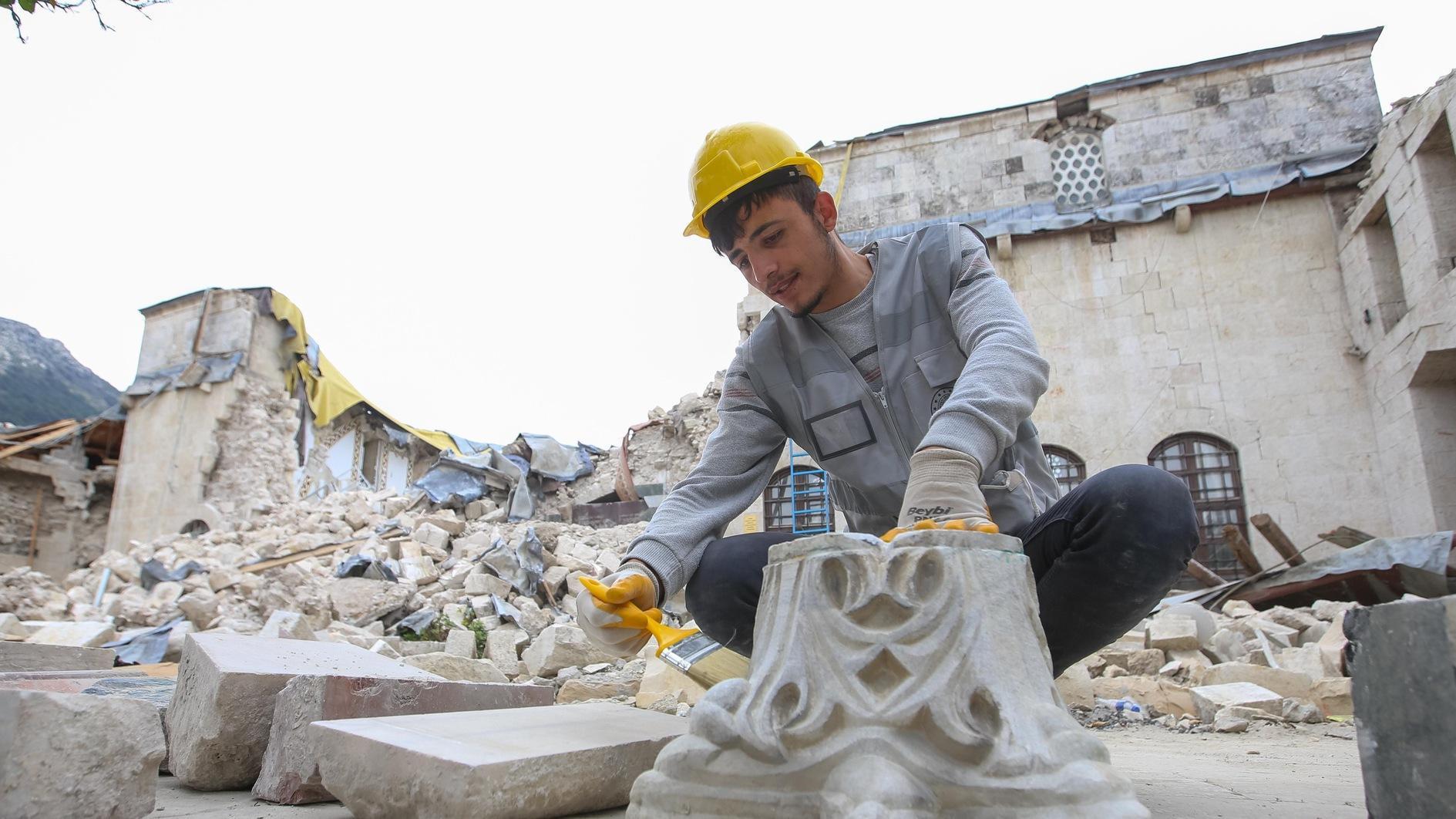
As a part of efforts to keep the historical heritage of the district alive, artifacts from historical buildings destroyed by the Feb. 6 earthquakes in Antakya, Hatay are being salvaged with "rubble archaeology" to be used in restoration.
Hatay, located in Türkiye’s Mediterranean region, is home to many civilizations and known for its historical texture and cultural heritage.
In earthquakes that shook the region on Feb. 6, all historical buildings were reduced to rubble or heavily damaged. To save registered historical cultural assets, the Culture and Tourism Ministry took action and established the Hatay Disaster Area Excavation Directorate.
Art historians, archaeologists, architects, restoration architects, civil engineers, volunteer university graduate and doctoral students have been collecting historical artifacts from the rubble for 10 months.
The original materials used in the historical buildings excavated in the works carried out on an area of approximately 3,070 acres are transported to the "Cultural Debris Casting and Sorting" site, which is a first in the world.
"Our cities and cultural assets were also earthquake victims. We conducted ‘rubble archaeology,’ a first of its kind. In the first days of the earthquake, just as the search and rescue teams were working to pull out the survivors from the rubble, we were rescuing quality artifacts. There are 720 registered cultural assets. We created a Cultural Debris Casting and Sorting Site," Excavation Head Muhammet Arslan said.
Calling the site a "cultural asset cemetery," Arslan explained, "We carried the historical artifacts we collect from the rubble to the sorting area. We started by separating the cut and rubble stone, wood and all the original materials of the buildings, and sorted them by district and parcel numbers. We then put signs indicating the region they belong to. These materials will be used in the restoration of the original buildings."
Arslan also stated that at the first stage they delivered artifacts from monuments to the Hatay Archaeology Museum and said, "We recovered quality materials from monuments such as the Great Mosque, Habibi Neccar Mosque and the Russian Orthodox Church. Inscriptions are the identity document of a historical monument. Our first goal was to save them."
"We also recovered architectural ornaments, such as columns, column capitals, mihrabs, mimbars, wooden door wings, windows and wooden cabinets. We successfully recovered quality artifacts from mosques, churches, masjids and baths," he added.